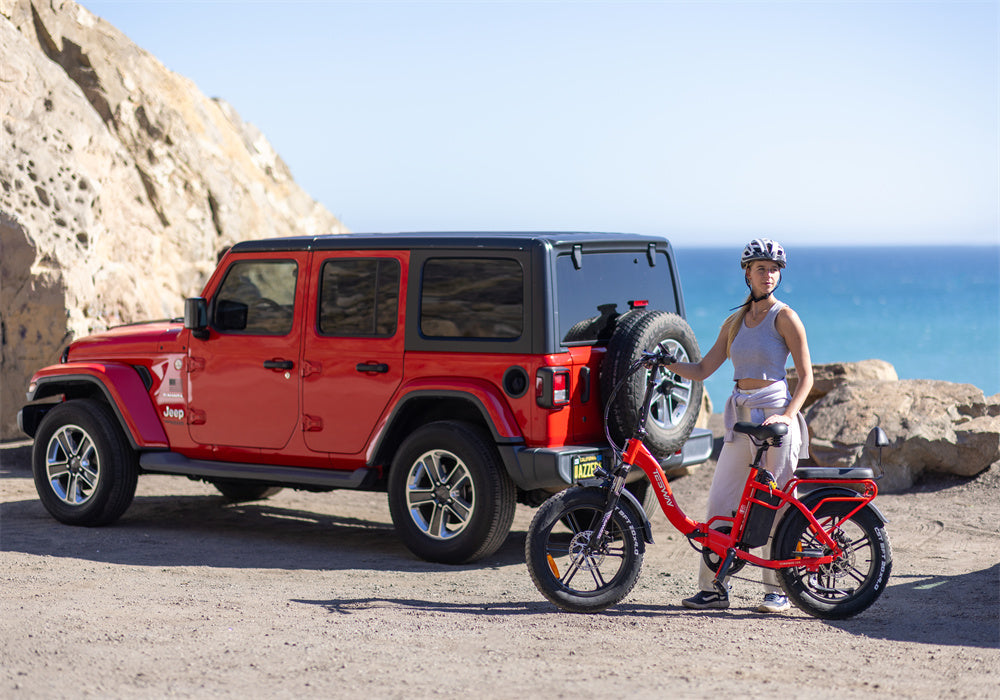Electric bikes have surged in popularity across the United States, offering an eco-friendly alternative to traditional transportation methods. However, with this rise in use comes the need for clear understanding of where these bikes can legally and safely be operated. When it comes to riding an e-bike on the sidewalk, the laws can vary significantly depending on the city and state.
Most jurisdictions categorize e-bikes similarly to traditional bicycles, but with specific amendments due to their motorized nature. The primary concern regarding e-bikes on sidewalks is the safety of pedestrians. E-bikes typically travel faster than standard bicycles, and this increased speed can pose risks in pedestrian-heavy areas.

Electric Bike Regulations
In the United States, the regulation of e-bikes on sidewalks varies significantly between different states and cities, reflecting a patchwork of local ordinances and state laws. These regulations are primarily driven by safety concerns, as e-bikes generally achieve higher speeds than traditional bicycles due to their motorized assistance. For instance, New York City prohibits all classes of e-bikes on sidewalks, emphasizing pedestrian safety in a densely populated urban environment. Conversely, in smaller towns or less crowded areas, regulations might be more lenient, acknowledging the lower risks involved.
Key Considerations:
- Local Laws and Ordinances: Each municipality may have unique rules that specify which paths or sidewalks are e-bike permissible.
- E-Bike Classification: Knowing whether your e-bike is a Class 1, Class 2, or Class 3 can affect where you are allowed to ride, as some classes are often more restricted.
- Pedestrian Traffic: High pedestrian traffic areas typically have stricter controls on e-bike usage to prevent accidents and ensure public safety.

E-Bike Classifications and Sidewalk Use
The classification system for e-bikes in the United States helps determine not only the suitable environments for their use but also the legal implications of where they can be operated. These classes are defined based on the maximum speed the motor can assist and whether the motor assists only while pedaling or also operates on throttle.
- Class 1 e-bikes are pedal-assist only, with no throttle, and the motor ceases to assist at 20 mph. These are often seen as the least disruptive to pedestrian zones, though local laws might still restrict their use on sidewalks.
- Class 2 e-bikes offer throttle-assisted riding up to 20 mph, allowing for easier acceleration, which can be a potential hazard on crowded sidewalks.
- Class 3 e-bikes are also pedal-assist but can reach speeds of up to 28 mph, making them suitable primarily for streets and dedicated bike lanes due to their higher speeds.
When considering riding an e-bike on a sidewalk, it's essential to check the specific regulations applicable to each class in your area, as penalties for violations can be substantial.
Tips for Staying Safe When Riding an Electric Bike
For riders of bikes who are allowed to ride on sidewalks or in areas where pedestriansre present it's essential to be extremely cautious and considerate.
Managing Speed: Adjusting your speed to match the pedestrian traffic density and flow is crucial. Keeping a speed helps reduce the impact force during accidents and lowers the chances of collisions.
Alerting Pedestrians: Use signals such as a bell or horn along with a verbal warning like "Passing on your left!" to notify pedestrians that you are approaching from behind. The TESWAY X7 features a loud horn, allowing you to alert pedestrians at any time.
Ensuring Visibility: Make sure both your e bike and clothing have lights and reflective materials in light conditions, like early morning late evening or bad weather to improve visibility.
Giving Way to Pedestrians: Always prioritize pedestrians right of way on sidewalks. Be prepared to stop or slow down when necessary to ensure pedestrians feel safe.

The Legal Consequences of Sidewalk Riding
Riding an e-bike where it's not permitted, such as certain sidewalks, can lead to various legal consequences, which serve to reinforce the importance of understanding and complying with local e-bike laws.
Fines: These are the most common penalties and can vary significantly from minor amounts in small towns to substantial fines in major cities.
Warnings: Authorities may issue verbal or written warnings as a first corrective measure, especially if the violation does not result in any harm.
Liability Issues: Should an accident occur, the e-bike rider might be held liable for injuries to pedestrians, which could lead to lawsuits or even criminal charges, depending on the severity of the incident.

How should I proceed if local regulations are unclear
If you are unsure about the rules for riding an e-bike in your area, it's a good idea to check with reliable sources:
State and City Transportation Websites: These often provide detailed information on e-bike regulations and are updated regularly to reflect any changes in the law.
Local Bike Shops: Employees at bike shops are usually knowledgeable about local cycling laws and can offer practical advice on where and how to ride safely in your area.
Cycling Clubs: Joining a local cycling club can be a great way to learn about e-bike rules and safe riding practices. Club members often share their own experiences and tips.
Click here for your state's laws and regulations.

TESWAY Ebikes: Quality Riding on a Budget
TESWAY is a top name in the American market for electric bicycles, known for its quality and affordable prices. They offer a wide range of electric bikes, whether you're commuting to work or riding on rough trails. TESWAY has options for everyone, including ebikes with fat tires that provide better grip and durability for tougher rides. Riding a TESWAY bike means enjoying every trip without worrying about high costs. They make sure that every push of the pedal is a pleasure, making TESWAY bikes a great choice for both everyday travel and adventure.
FAQs
Can I ride my e-bike on any sidewalk?
It depends on your local laws. Many cities have specific regulations that prohibit or restrict e-bikes on sidewalks.
What are the classifications of e-bikes?
E-bikes are categorized into three classes based on their motor's power and operational speeds: Class 1, Class 2, and Class
What should I do if my local laws are unclear about e-bikes on sidewalks?Contact local transportation authorities or consult a legal expert to clarify local regulations and ensure compliance.







Share:
Are Electric Bikes Street Legal Everywhere
Where to Buy Your Next EBike: Walmart, Amazon, or TESWAY